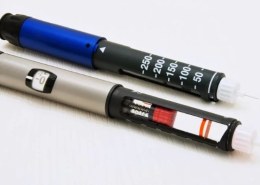Diabetes pens are innovative devices designed to deliver insulin to individuals with diabetes effectively. These pens come in both disposable and reusable forms, making them an appealing choice for many patients. A typical diabetes pen consists of a cartridge filled with insulin, a dial mechanism that allows users to select their required dosage, and a small needle for injection. The ease of use and portability of these devices significantly enhance the daily management of diabetes, allowing patients to administer their insulin with greater convenience and discretion, whether at home, work, or while traveling. By simplifying insulin delivery, diabetes pens contribute to better adherence to treatment regimens and improved overall health outcomes for those managing diabetes.
Types of Diabetes Pens: Choosing the Right Option
There are primarily two types of diabetes pens: disposable and reusable. Disposable pens are pre-filled with insulin and are designed for single-use, ideal for individuals who prefer simplicity and minimal maintenance. In contrast, reusable pens allow patients to replace the insulin cartridges, making them a more eco-friendly option for long-term users. Many models offer features such as dose memory, which helps track insulin administration, and some even integrate with glucose monitoring systems. Choosing the right pen largely depends on personal preferences, lifestyle, and specific medical needs. Consulting healthcare professionals can provide valuable insights, enabling patients to make informed decisions tailored to their unique management of diabetes.
How to Use a Diabetes Pen: Step-by-Step Guide
Using a diabetes pen may seem daunting at first, but with practice, it becomes second nature. Start by gathering your supplies: the pen, insulin cartridge, and alcohol swab. Wash your hands thoroughly before beginning. Attach the needle to the pen and perform a “prime” to remove any air bubbles by dialling a small dose and pressing the button until insulin appears at the needle tip. Select your desired dosage by turning the dial, clean the injection site with an alcohol swab, and inject the needle at a 90-degree angle. Hold the injection for about 10 seconds to ensure complete delivery before removing the needle. Dispose of the used needle safely in a sharps container, adhering to local regulations.
Benefits of Using Diabetes Pens: Convenience and Control
Diabetes pens offer several key benefits, making them a popular choice among insulin-dependent diabetics. Firstly, their compact design allows for easy portability, which is especially crucial for individuals with busy lifestyles. Additionally, pens often come pre-loaded with insulin, reducing the need for separate syringes and vials. This streamlined approach minimizes errors in dosing while maximizing precision in administration. Many pens also feature dose memory functions, which can help patients keep track of their insulin usage throughout the day. Furthermore, the discrete nature of using a diabetes pen encourages adherence to treatment, leading to better overall diabetes management and fostering confidence in self-care among users.
Potential Challenges of Diabetes Pens: Managing Side Effects
While diabetes pens offer numerous advantages, there can also be challenges associated with their use. One potential issue is the risk of injection site reactions, including pain, redness, or swelling. This can be mitigated by varying injection sites and ensuring proper technique. Additionally, if a pen malfunctions or if the insulin is stored improperly, it may compromise the medication’s effectiveness. Patients must also be cognizant of dose calculations, as misdialing can lead to under or overdosing. This emphasizes the importance of education and training on the proper use of diabetes pens. Regular consultations with healthcare professionals can help address any concerns, ensuring individuals effectively manage their diabetes.
The Future of Diabetes Management with Pens
In conclusion, diabetes pens represent a significant advancement in the management of diabetes, combining convenience and precision in insulin delivery. As technology continues to evolve, we can expect further innovations, such as smart pens that sync with mobile applications to provide real-time data and better manage blood glucose levels. Ensuring proper education on the use of these devices is essential for maximizing their benefits. As more patients adopt diabetes pens, the overall quality of life for individuals living with diabetes may improve, ultimately leading to better health outcomes. Emphasizing patient engagement and continuous education will be crucial in harnessing the full potential of this essential diabetes management tool.
Get More Insight: https://www.marketresearchfuture.com/reports/global-diabetes-pen-market-564
